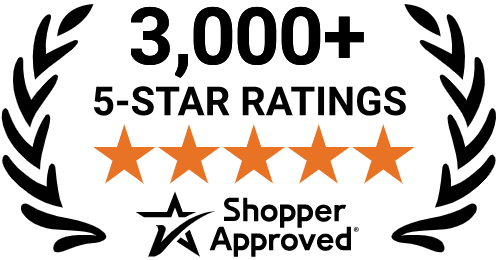Description
Indications
Lovenox is a prescription medication used to prevent and treat harmful blood clots, which in turn helps reduce the risk of stroke or heart attack. It is specifically indicated for the following conditions:
- Prevention of deep vein thrombosis (DVT) after abdominal, hip, or knee replacement surgeries or in medical patients with restricted mobility during acute illness
- Treatment of acute DVT either as an inpatient or outpatient with or without pulmonary embolism
- Prophylaxis against ischemic complications of non-Q-wave myocardial infarction (MI) and unstable angina
- Management of acute ST-segment elevation myocardial infarction (STEMI) with medical treatment or percutaneous coronary intervention
Lovenox is an anticoagulant medication belonging to the low molecular weight heparin (LMWH) class. It works by binding to and accelerating the activity of antithrombin III, inhibiting certain clotting factors involved in blood clot formation.
This action prevents thrombin production and fibrin clot formation, resulting in free-flowing blood that is less prone to clotting.
Uses and Dosage
Before using Lovenox and every time you get a refill, thoroughly review its medication guide and patient information leaflet. Seek advice from your doctor or pharmacist for any questions or concerns.
The dosage and length of treatment with Lovenox are based on the patient’s medical condition and response to treatment. Age and weight may also be considered for
certain conditions.
Typically, Lovenox is administered via subcutaneous injection as directed by a physician, once or twice daily in the abdomen (at least 2 inches away from the belly button) and should not be injected into a muscle.
Your healthcare provider will instruct you on how to administer the injection or arrange for someone else to do so.
Before administration, visually inspect the product for any particles or abnormal coloration. Refrain from using the solution if either of these is detected.
Here is step-by-step instructions for self-injection of Lovenox:
- Thoroughly wash and dry your hands
- Find a comfortable position where you can see your abdomen
- Select an area on either the right or left side of your abdomen (alternate injection sites each administration to minimize subcutaneous harm)
- Use an alcohol swab to clean the chosen injection site and allow it to dry
- Remove the needle cap by pulling it straight off the syringe and dispose of it in a sharp’s collector (Do not expel air or medication from the syringe before administration unless instructed by your healthcare provider)
- Hold the syringe like a pencil in your writing hand
- With your other hand, pinch an inch of the cleansed area to create a skin fold
- Insert the full length of the needle straight down at a 90° angle into the skin fold
- Empty the syringe by pressing down the plunger with your thumb
- Pull the needle straight out at the same angle it was inserted, and release the skin fold (avoid rubbing the injection site to minimize bruising)
- Depress the plunger to activate the safety shield while pointing the needle downward and away from yourself and others
- Place the used syringe in a sharp’s container (each syringe contains a single dose and should not be reused)
Administer Lovenox regularly around the same time daily, exactly as directed. Refrain from altering the dosage or frequency of injections without consulting your physician.
Even if your symptoms have subsided, do not discontinue Lovenox without seeking medical advice.
Side Effects
Listed below are potential adverse reactions associated with the use of Lovenox. Notify your doctor or pharmacist promptly if any of these symptoms last or worsen.
Common Side Effects
- Nausea
- Diarrhea
- Anemia
- Confusion
- Pain, bruising, redness, or irritation at the injection site
Serious Side Effects
- Unusual or excessive bleeding, including bleeding that does not stop
- Easy bruising or the appearance of purple or red spots under the skin
- Bleeding from the gums or nose
- Abnormal vaginal bleeding, blood in the urine or stool
- Coughing up blood or vomiting blood that resembles coffee grounds
- Signs of bleeding in the brain:
- Sudden weakness (especially on one side of the body)
- Severe headache
- Problems with speech or vision
- Indication of low red blood cell count (anemia):
- Pale skin
- Fatigue
- Dizziness
- Shortness of breath
- Cold hands and feet
Call your doctor at once if you experience any of the severe side effects listed above.
Seek immediate medical assistance if you have symptoms of a spinal blood clot:
- Back pain
- Numbness or muscle weakness in your lower body
- Loss of bladder or bowel control
Allergic Reactions
Seek urgent medical attention if you experience symptoms of an allergic reaction, such as:
- Rash
- Severe dizziness
- Trouble breathing
- Facial, tongue, or throat itching/swelling
The enumerated side effects of Lovenox are not exhaustive. Should you encounter any unlisted symptoms that are bothersome, promptly notify your physician.
Cautions
Before starting treatment with Lovenox, inform your healthcare provider or pharmacist about any allergic reactions you may have had, especially to enoxaparin, heparin, any other drugs, or pork products.
Inactive components in this medication may cause allergic reactions or other issues. Request a list of ingredients from your pharmacist for further details.
To ensure that Lovenox is safe for you, disclose to your doctor your medical history, particularly of:
- Artificial heart valve(s)
- Kidney or liver disease
- Bleeding/blood disorders (e.g., low platelet counts)
- Low platelet counts following previous heparin therapy
- Had a stroke or suffered from high blood pressure
- Certain eye issues (e.g., diabetic retinopathy)
- Certain stomach/intestinal problems (e.g., recent ulcers)
- Recently underwent spinal procedure or puncture or have spine problems (e.g., spinal deformity)
- Recent eye/brain/spinal cord surgery
Certain products may interact with Lovenox, including mifepristone. To prevent such drug interactions, inform your healthcare provider and pharmacist of all current and planned medications, including prescriptions, over-the-counter medicines, supplements, and herbal products, before using this medication.
Carefully examine the labels of all your medications, as many contain pain relievers/fever reducers (NSAIDs, e.g., ibuprofen, naproxen, or aspirin) that can heighten the risk of bleeding/anti-platelet effects when used with Lovenox.
However, if your doctor has advised you to take low-dose aspirin for heart attack or stroke prevention (usually 81-162 milligrams daily), you should continue to do so unless otherwise instructed by your doctor.
To prevent bleeding or injury while in Lovenox treatment, consider using extra caution when handling sharp objects, such as razors or nail cutters. Avoid engaging in contact sports or activities that may increase the risk of injury or bruising.
The use of Lovenox during pregnancy should only be when necessary. Consult with your doctor regarding its risks and benefits.
The transfer of enoxaparin into breast milk is still unknown. Consult your doctor before breastfeeding while taking this medication.

 Prescription Required
Prescription Required




